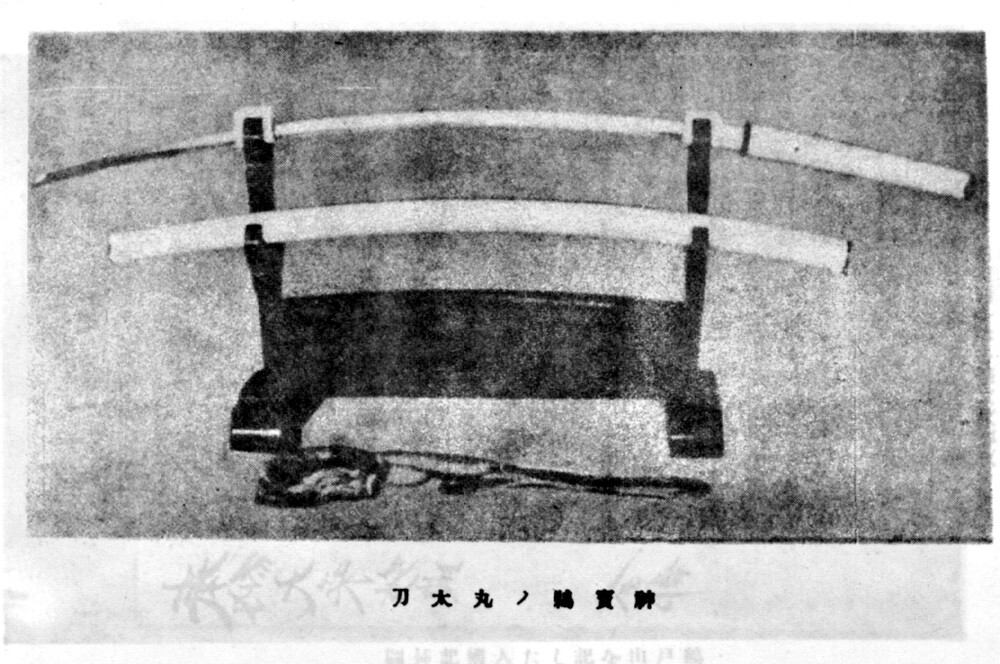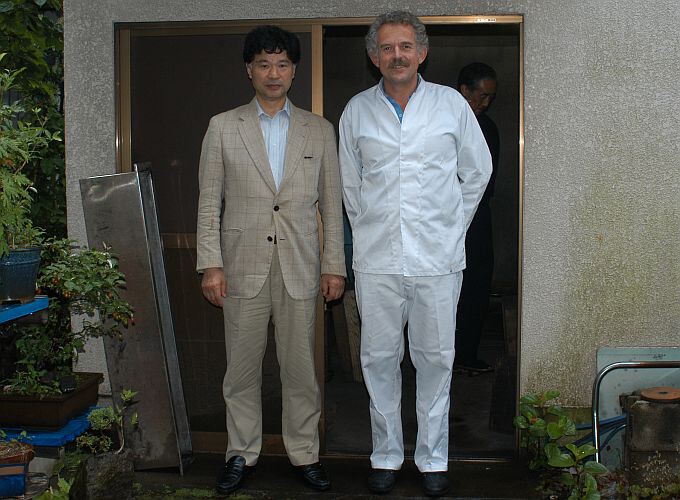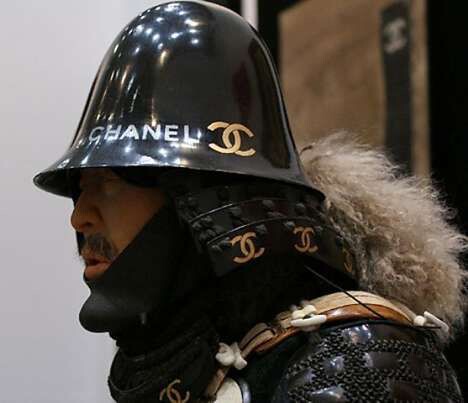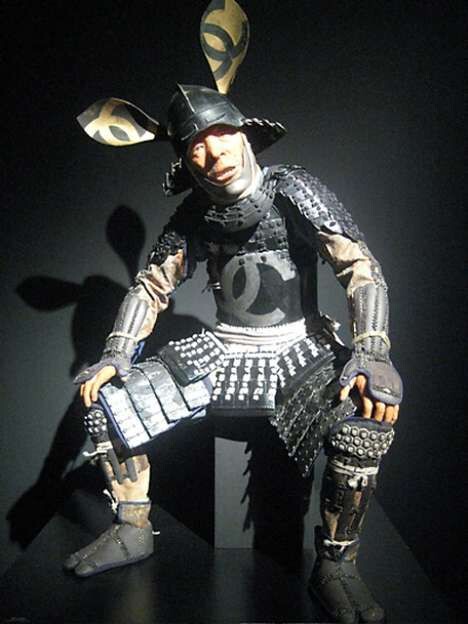-
Posts
2,121 -
Joined
-
Last visited
-
Days Won
8
Content Type
Profiles
Forums
Events
Store
Downloads
Gallery
Everything posted by Carlo Giuseppe Tacchini
-

Its just weird...
Carlo Giuseppe Tacchini replied to Markus's topic in General Nihonto Related Discussion
Paypal accepted ? -
Speechless. Just need to give you my best thanks for the efforts and best whishes for the future. Sursum corda.
-

What are unusual or rare subjects for menuki?
Carlo Giuseppe Tacchini replied to ububob's topic in Tosogu
I once saw menuki for wakizashi with Hotei and Okame, but I don't know how much this fits with "human". Marishiten as well may not fit interely the "human" condition still she's present in late works. -

Evolution of Japanese blades pic
Carlo Giuseppe Tacchini replied to Curgan's topic in General Nihonto Related Discussion
John, can't remember it... But the one linked by Donald is good. -

Pics of Unomaru Ko-Tachi.
Carlo Giuseppe Tacchini replied to Carlo Giuseppe Tacchini's topic in Nihonto
You are the right man to solve the matter. Please let us all know. -
Difference might be so slim to be unnoticeable, if present, especially for the use such swords were intended to. I would like to rise an exception that has not been made so far, using what I believe is common sense, and still relevant to the topic of the use of western steel instead of Tamahagane. We know for a fact that IJA and IJN (in the usual environment of competition we know they acted during all the war) both established a forge to provide traditionally made swords to their officers. I'd unerline the fact that the task was to equip their affluent officers with traditionally made swords. *Not* to support the traditional art of swordmaking. They could have done so leaving these swords for civilian only. If traditionally (well) made swords were so inferior, why to allow affluent officers arm themselves with such inferior weapons and not force them to use standard Koa Isshin Mantetsu ? Why to waste money and time in supporting these forges, again *not* intended to support the traditional process, instead to enforce the Mantetsu production ? Why so many officers used ancestral swords, many with gimei of big names, putting their live in danger ? Why during the russo-Japanese war, the WWI or the Siberian intervention no such a need arose (not even the need of frost-resistant blades when supporting the Czar in Siberia) ? Too many question maybe but I've made out a rather explicative answer that, to me, works quiet well. I tend to attribute this to the mentality change started during the early '30s (maybe some year before) that sorted in the military dictature. Propaganda and Bushido-like organization of Army and Navy suddenly made every officer and NCO in need of a well made "Japanese" sword and the only way to provide such a large number of men with good swords was to produce them industrially. Whether or not they were (are) really better wasn't relevant because the establishment had no other way out than say that industrially made swords were more effective to fulfill the massive need of a "samurai sword", to the point of performing tests on antiques that invariably ended out supporting their assertions. Industrially made swords were made even before, but the need to explain they were better never arose until the '30s. Even the choice of a traditional sugata instead of the western one calls for a psicological target. Before, western sabres were perfectly good to slash russians or chineses, so good that ancestral blades were adapted (butchered?) to fit the standard sabre-like mount. I think the focus was on psicological effect rather than effectiveness. To support how they were training their troops, they didn't feel the need of a good automatic rifle or anti-tank weapons, no self-sealing fuel tanks for planes. They needed an excessively long Arisaka bayonet for the heirs of Ashigaru and modern mass produced Tachi for the heirs of Samurai, even when they were pilots, paratroopers or sailors. Psicology might be at the root of the use of nanban steel as well. We could have two situations sparked by the same psicological need of a superior weapon. Whether this is the case and how much the superiority is effective looks like a very personal interpretation of facts and evidences. Nonetheless I think that the point of view I'm expressing is at least worth a consideration.
-
The need for a sword that fitted extreme cold was not rised by the fact hat *all* the traditional Nihonto broke on the battlefield but by the observation that *a few* didn't. Those were recognized as produced by a fairly unknown school situated in northern Japan and nicknamed Ura-NihonTo. Sometimes it's enough to read history "between the lines".
-
The evidences you're referring to are the same ones studied by Fukunaga Suiken I've quoted in my post. In fact Fukunaga studied them and the "destructive tests" made by the IJA before the war. I can give you that a substancial emprovement on the *average* Nihonto has been achieved with some types of mass produced blades, but I also suggest you to see the matter under the point of view of those times (Ohmura seems quiet unable in doing so...). Propaganda was not a need, was a way of thinking. So let's destroy some "big names" to prove we're able to outperform them for the sake of the Empire... For example, and returning to the topic, the modern swords outperforming NihonTo in cold weather is propaganda. As I've shown before, swords reliable in cold weather were indeed produced far before. The *average* Nihonto was not suitable for extreme cold weather, because it had *no such a need*. It was perfectly possible to produce swords well suited to cold environment even with traditional means (see link posted before). Of course needing the IJA a production in industrial quantities, it also needed a total different approach. What sometimes make me laughin is the section of traditionally made sword Ohmura posts as evidence of superiority by the mantetsu swords over the hand made ones because of better distribution of the shingane. I've a picture of a sectioned jokoto that is better built than the example of "average hand made sword" Ohmura use as example. Maybe I've poorly expressed my opinion, that was intended to stress the fact that whether Hizen swords have or have not nanban steel inside, I think the matter has little or no consequence on Hizen smiths' skillfulness. Personally I think nanban steel was indeed used (and not only by Hizen smiths, and before the Early Edo), but I'm still very uncertain if it had any consequence in the final result. Let's not endorse the case that Hizen smiths were superior for the material used rather than for their skillfullness. So far the only possible link between quality and nanban steel is the carbon content yotan steel had. The higher the carbon content the more the folds allowed (cause of the carbon content loss in the process). The more the folds allowed the finer the hada. But such a fine hada has been achieved before when no nanbatetsu was available, and we don't know how much yotan steel (if...) was used in the very likely case of a blend with Japanese steel. So we still remain with an unanswered question. IMHO.
-
Hyotan testu is fairly commonly belived to be crucible steel from India. The shape of the ingot itself calls for such. It have to be pointed out that this is just one of the many “Nanbantetsu” types reported. It usually is mentioned in discussions about the use of wootz in NihonTo, discussions that have been already addressed “an nauseam” and thanks God hasn’t been risen here (yet). Anyway seems to me to rmember it's the only one mentioned to be suitable for use in swordsmithing. Gotetsu might mean a 5 different types of steels instead of 5 plates or a geographical place. If my suggestion has any meaning in real life I can’t say. Not a good reason to use nanbantetsu, IMHO. This was already achieved far before in a totally different area with no use of nanbantetsu. See swords produced in northern Japan http://www.nihontocraft.com/Ura_Nihon_no_Toko.html There was very little need of iron in east Asia but Japan and I would say India is the least one to be affected by such a need. Hence I’d more comfortable to suggest that the name “Dutch steel” simply means “steel that comes from the dutch”. For the mentioned reasons the dutch didn’t shipped steel to East indies directly from Europe unless (still to be proved) as ballast. It can be suggested that ballast could have had something else (easier to trade with , say, India) when traveling from Europe to East Indies and then replaced with Indian or Thai steel for commerce with Japan. This works using the same theory of ballast, so we shouldn’t rely on it with strong confidence. Now what IMHO are great inputs : I agree. From the time of “Blood (Portuguese red wine) drinker” Nobunaga, the west achieved a sort of exotic fashion to Samurai. The more advanced weapons as ships, guns, helmets and armor played a significant role in this. I suggest this might well be what remained of this fashion after the Sakoku (鎖国). Only reason that comes to mind is to enhance the carbon content of Tamahagane with high carbon Indian steel. Don’t know how much this could have been a real need. Good point and worth a further discussion but I’ve to highlight this has already been done elsewhere and the conclusions were… inconclusive. AFAIK there is no definitive way, even with present day instruments and sacrificing an Hizen blade, to definitively say whether and how much nanban steel was used in such blades and even more difficult would be to know where it (eventually) came from. Chances are that nanban steel was mixed with Japanese one and the obtained blend would give only suggestions, not evidences, even if the presence of specific inclusions and rare materials are found. The content of sulphur is not the same on all nanbantetsu types, as aren’t the other impurities. Now I would conclude my post with a rather provocative question. Are we shure the thin Kawagane was meant to save steel and not an attempt to achieve a better cutting ability ? Fukunaga Suiken during his tests about reliability of swords seems to have found out that the closer the shingane to the Ha, the higher the performance in resisting cutting streeses. Even incredibly small differences could have made a significant difference. maybe Hizen smith decided to sacrifice durability to performance ? This would undermine the theory Hizen swords were built to save a precious material, highlighting instead the ability of the smiths. In short, IMHO Hizen smiths were great smiths not *because of* nanbantetsu, but *also with* nanbantetsu.
-

Pics of Unomaru Ko-Tachi.
Carlo Giuseppe Tacchini replied to Carlo Giuseppe Tacchini's topic in Nihonto
Following Brian's request and in name and on behalf of Morita-san hereunder the picture of Unomaru Tachi Morita-san has been able to find with his usual kindness and astonishing capacities. However, it doesn't match with the drawing in my source. This one has the slender sugata and curvature on the blade typical of later Tachi, not the almost straight blade with deep nakagozori I am searching for . As I trust 101% both my translator and Morita san there are two possible exlpanations : 1) there were more than 1 sword labeled as Unomaru Tachi. 2) one of the sources (Shrine book or mine) is wrong. I tend to believe as wrong the latter. However, as has been pointed out by Morita San in his previous post, the eventual mistake might have an explanation. There are several legends about this sword so it is not totally out of discussion the possibility that the same name has been given to different blades. Again many thanks for the help, Morita-san. Very obliged. -
Got it Chris, but realized that without a link the whole matter was cryptic. I guess that if anything turns out from the East indies Company's archives it would be about trade between India and Java, but the ballast theory is a very interesting one. Most of the cannons dutch and portugueses had were re-melted or repaired in Goa and Batavia at that time, to avoid a long and dangerous trip back to Europe. However, for sure trade ships had to travel back to homeland with goods... EDIT : I've read years ago on a board claims that Ashigaru armor were produced in Netherland, but never had the opportunity to verify this.
-
Seems Shoshin. http://tokensugita.com/NT.htm Mine is not an endorsement on the dutch origin of the nanban steel, either all or in part. Just pointing out this interesting research. IMHO, most of the nanban steel was from India and likely NOT wootz, OR if it was crucible steel (wootz) it was used as source of extra-high carbon steel rather than for the texture that would have been lost in the Japanese smithing process that definitively doesn't fit wootz as far as smithing of the blade goes.
-

Pics of Unomaru Ko-Tachi.
Carlo Giuseppe Tacchini replied to Carlo Giuseppe Tacchini's topic in Nihonto
Morita-San, seems I can't contact you via e-mail. Did you get my last 2 e-mail ? -
I was suggesting to read it not literally but as a "way to say", originally meant to indicate a top level forged blade : Page 10 here : http://www.webalice.it/tsubame1/Downloads/1)%20On%20the%20origins%20of%20Nihonto.pdf
-
Hi Eric. It is possible the statement has not to be taken literally but in a more general meaning. Possibly a slip by the translator, but what comes to mind to me is the inscriptions of quality control that antique chinese swords had to have when produced, that stated various numbers of "foldings" (being 100 the highest level of quality) that in reality meant the equivalent in "layers". Some of such ancient chinese swords were sectioned and the number of layers of the 3 sections of steel they were forged, when added to each other, almost exactly matched the number of supposed "foldings". Maybe it's his way to say "top quality forging". My 2 cents.
-

What are unusual or rare subjects for menuki?
Carlo Giuseppe Tacchini replied to ububob's topic in Tosogu
What about cats as rare ones ? http://www.ricecracker.com/inventory/ft ... _neko.html -

Where and how to start
Carlo Giuseppe Tacchini replied to Ford Hallam's topic in General Nihonto Related Discussion
This is a good point and remind me of some rather cheap but useful booklets by Hawley about this subject, booklets that have not been mentioned yet. -

Where and how to start
Carlo Giuseppe Tacchini replied to Ford Hallam's topic in General Nihonto Related Discussion
As I (and likely most here) own all the books mentioned so far, I'd say that this one is the most "Eye-candy" of them. Definitively a good one if you're searching for very basic historical developement references, but IMHO lacks in most of the needed basics, i.e. visual glossary of blade, activities and hada. IMHO it should be accompained by something a little more technical. Good suggestion one of the small booklets mentioned above. Anyway, I still remains fashioned by my old, original copy of Nagayama's work. No eyecandy at all, but... -

Where and how to start
Carlo Giuseppe Tacchini replied to Ford Hallam's topic in General Nihonto Related Discussion
I suppose we're talking about beginners able to read english (you don't know how many in Italy dislike foreign sources, with obvious consequences as the INTK project to translate the Nagayama). I would suggest that the very basics as smithy, terminology and developement nowadays can be found in some fine online sites, recommended by specific boards as this one. These websites sould be accompained (IMHO) with the reading of the basics of Japanese history. Having said this I think it could be safe to jump to the Nagayama, *after* having read and understand the cited sites. This because the Nagayama provides a larger view and deeper information on what is already available online. Only fault is his rather poor images. Sato is another good suggestion. My 2 cents. -
Soberty might, and IMHO indeed is, a quality you can find in katchu defined work of arts, especially Kabuto, even if might be not the case of the specific armor you're telling us about (you're certainly more qualified than me about this). Artistic or historical aspect apart, the point is to discern between sober quality and poor craftmanship meant to save time and material.
-
Maybe I now understand how you've got this feeling "In a salute to luxury brand Chanel, artist Tetsuya Noguchi has created some concept samurai armor suits designed to appeal to the fashion-conscious warrior. Made from resin, cashew lacquer, cloth and glass, the exquisitely crafted protective suits sport the iconic double-C logo, allowing the wearer to flaunt his superior social status while crushing the enemy on the battlefield". http://elogedelart.canalblog.com/tag/Armor
-
Guess the source is the always friendly Dr. Coutinho in his article on JSSUS newsletter. As I'm not sure he's a registered member so I take the responsibility to call him in cause *but I can be mistaken* as I'm not at home and can't check the newsletters. Barry, that edited his articles, can surely be more precise and eventually dismiss my above statement.





